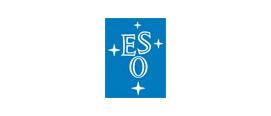Life Cycle of Stars and the Universe
There is an abundance of quality resources available to help teachers with this topic. It's a very exciting area of the curriculum but since it doesn't lend itself to experimental work, a good variety of activities is included here.
The Institute of Physics have a whole collection of videos that cover the big ideas as well as providing classroom activities - all HERE
Whilst this list provides a source of information and ideas for experimental work, it is important to note that recommendations can date very quickly. Do NOT follow suggestions which conflict with current advice from CLEAPSS, SSERC or recent safety guides. eLibrary users are responsible for ensuring that any activity, including practical work, which they carry out is consistent with current regulations related to Health and Safety and that they carry an appropriate risk assessment. Further information is provided in our Health and Safety guidance
- ALL
- Textbook
- Video
- Interactive resource
- Information sheet
- External link
Textbook
Science and Technology in Society 12
Zoom down to the last document in this list to find the “Are you made of Stardust?” activity. This would be a good follow-on activity after taking a tour of the Orion Nebula since students would be familiar with it. It looks a little dated but would work very well in conjunction with the "I am a Star" resource at the top of this list. The resource is designed for students to work through on their own but it is only recommended in this format for able students. However, with a bit of re-jigging and teacher input, it would be suitable for the whole class.
Video
The Life Cycle of Stars: the Hertzsprung-Russell Diagram
You might like to combine this activity with a more traditional way of looking at Hertzsprung-Russell diagrams. Walking out the lifecycle of a star is an effective way of engaging all the class (those watching will be looking for mistakes!) and will be memorable too. If your outside area is suitable, you could consider using playground chalks to draw out a large diagram rather than have to construct one on paper or fabric. It has the added advantage that the students involved in the activity will point it out to their friends. Don’t worry, it will disappear as soon as it rains.
Colour and Temperature of Stars
Here’s a short and simple experiment that all the class can do, relating the temperature of a bulb, and thence a star, to its temperature. If you’re lucky enough to have an infra-red camera then you’ll be able to “see” the bulb glow before it’s visible to the eye. An applet on black body radiation would make an excellent follow up activity. Here’s a good one to try: https://phet.colorado.edu/sims/blackbody-spectrum/blackbody-spectrum_en.html
How Might the Universe End?
This highly rated film isn’t to everyone’s taste and some might find it rather patronising for some Key Stage Four students, but it is nevertheless a brave attempt to explain in simple terms some pretty mind-blowing physics in an engaging manner. You could use it alongside more traditional teaching methods to reinforce and consolidate learning.
The Orion Nebula
This short film shows optics put to good use and reveals the hidden structure within the Orion Nebula. It makes a good introduction to the birth (and life cycle) of stars and would be complemented very well with this tour of the Orion Nebula from the Hubble Space Telescope Website:
http://hubblesite.org/gallery/tours/tour-orion/
If you’re not sure of your ground, you can watch it through yourself before using it with the students and use all the information that appears in the labels.
Birth of the Solar System
A super 3 minute animation, with narration, showing the formation of our own solar system. It explains well the distinction between the inner rocky planets and the outer gas giants and it would fit readily into a lesson about the size and scale of the solar system.
Big Bang Theory *suitable for home teaching*
An animated video is an engaging and accessible introduction to the Big Bang and subsequent formation of the Universe.
Big Bang Evidence *suitable for home teaching*
A short film that summarises the evidence we have for the Big Bang theory. It would be useful to use as revision when these three pieces of evidence have been taught.
Interactive resource
I Am a Star *suitable for home teaching*
What a super idea! This really personalises your students’ connection to the stars as they find out which of the atoms in their body were made in the big bang, which were formed in the stars, and which in supernovae. It’s a lovely resource to use when teaching nucleosynthesis. Calculation of monetary value adds a further dimension – students will definitely want to print out and keep their own spreadsheet.
Information sheet
The Sun
First produced as a poster, this leaflet provided lots of information about the sun including all the key vocabulary required by the GCSE specifications. Printed back to back on A3 paper (and then laminated) it would make a great classroom resources for students. You could allocate groups of students a section of it and ask them to prepare a presentation to give to the rest of the class.
External link
Star birth in the Orion Nebula
This two minute film from the Hubble Space Telescope site is set in the Orion Nebula where new stars are forming. It would work well in the middle of a lesson, serving both to make a break from one activity to another and consolidate previous learning.








